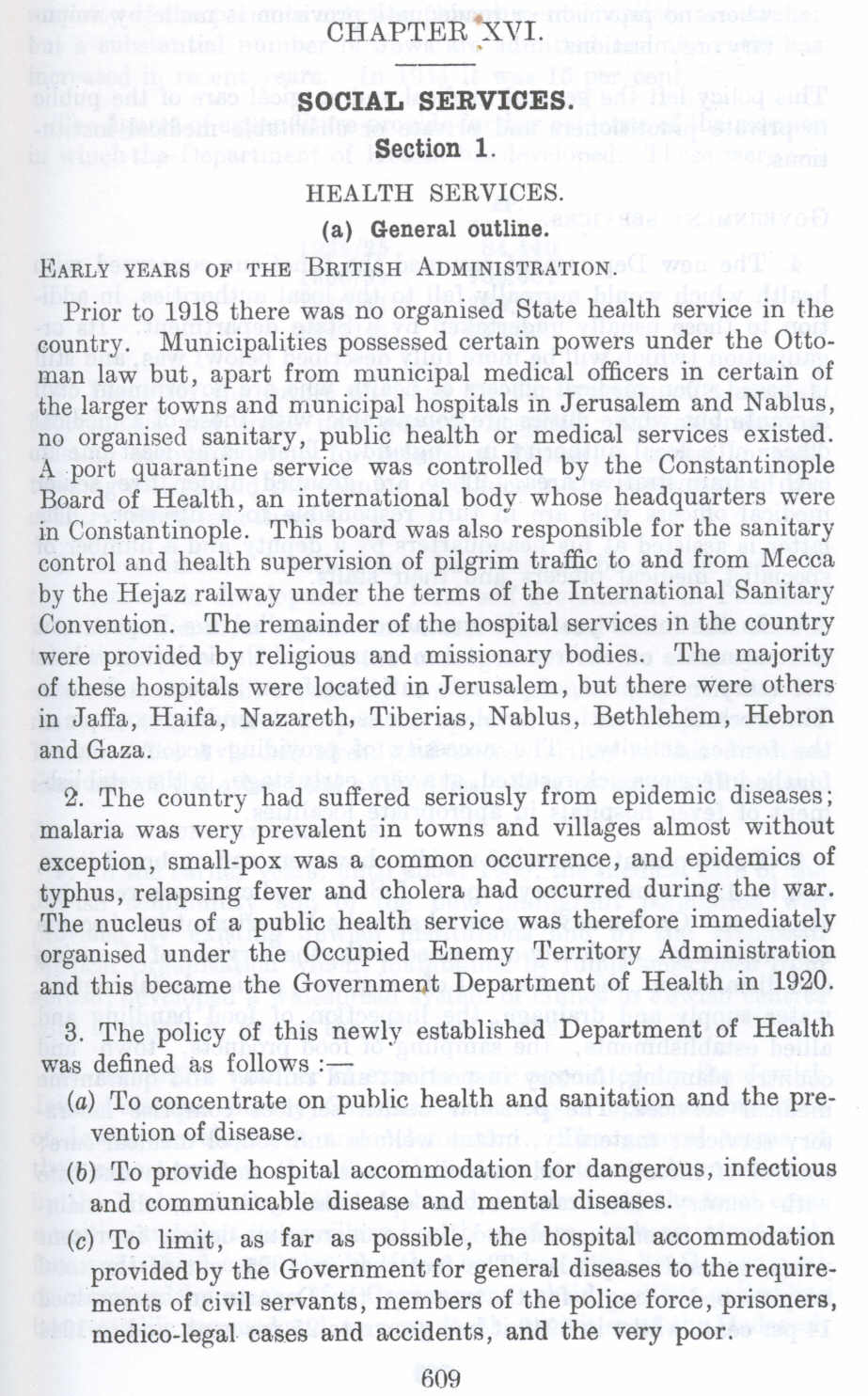| Prev | Next |  |
| Prev | Next |
| PalestineRemembered | About Us | Oral History | العربية | |
| Pictures | Zionist FAQs | Haavara | Maps | |
| Search |
| Camps |
| Districts |
| Acre |
| Baysan |
| Beersheba |
| Bethlehem |
| Gaza |
| Haifa |
| Hebron |
| Jaffa |
| Jericho |
| Jerusalem |
| Jinin |
| Nablus |
| Nazareth |
| Ramallah |
| al-Ramla |
| Safad |
| Tiberias |
| Tulkarm |
| Donate |
| Contact |
| Profile |
| Videos |
Social Services in Palestine before 1948 (Nakba), British Mandate: A Survey of Palestine: Volume II - Page 609. Chapter XVI: Section 1: Health Services : (a) General Outline |
Disclaimer
The above documents, article, interviews, movies, podcasts, or stories reflects solely the research and opinions of its authors. PalestineRemembered.com makes its best effort to validate its contents.


Post Your Comment
*It should be NOTED that your email address won't be shared, and all communications between members will be routed via the website's mail server.
SOCIAL SERVICES.
Section 1.
HEALTH SERVICES. (a) General outline.
EARLY YEARS OF THE BRITISH ADMINISTRATION.
Prior to 1918 there was no organised State health service in the country. Municipalities possessed certain powers under the Ottoman law but, apart from municipal medical officers in certain of the larger towns and municipal hospitals in Jerusalem and Nablus, no organised sanitary, public health or medical services existed. A port quarantine service was controlled by the Constantinople Board of Health, an international body whose headquarters were in Constantinople. This board was also responsible for the sanitary control and health supervision of pilgrim traffic to and from Mecca by the Hejaz railway under the terms of the International Sanitary Convention. The remainder of the hospital services in the country were provided by religious and missionary bodies. The majority of these hospitals were located in Jerusalem, but there were others in Jaffa, Haifa, Nazareth, Tiberias, Nablus, Bethlehem, Hebron and Gaza.
ll. The country had suffered seriously from epidemic diseases; malaria was very prevalent in towns and villages almost without exception, small-pox was a common occurrence, and epidemics of typhus, relapsing fever and cholera had occurred during the war. The nucleus of a public health service was therefore immediately organised under the Occupied Enemy Territory Administration and this became the Government Department of Health in 1920.
3. The policy of this newly established Department of Health was defined as follows :-
(a) To concentrate on public health and sanitation and the prevention of disease.
(b) To provide hospital accommodation for dangerous, infectious and communicable disease and mental diseases.
(c) To limit, as far as possible, the hospital accommodation provided by the Government for general diseases to the requirements of civil servants, members of the police force, prisoners, medico-legal cases and accidents, and the very poor.
609